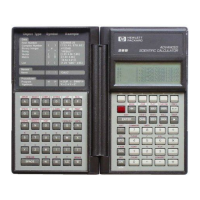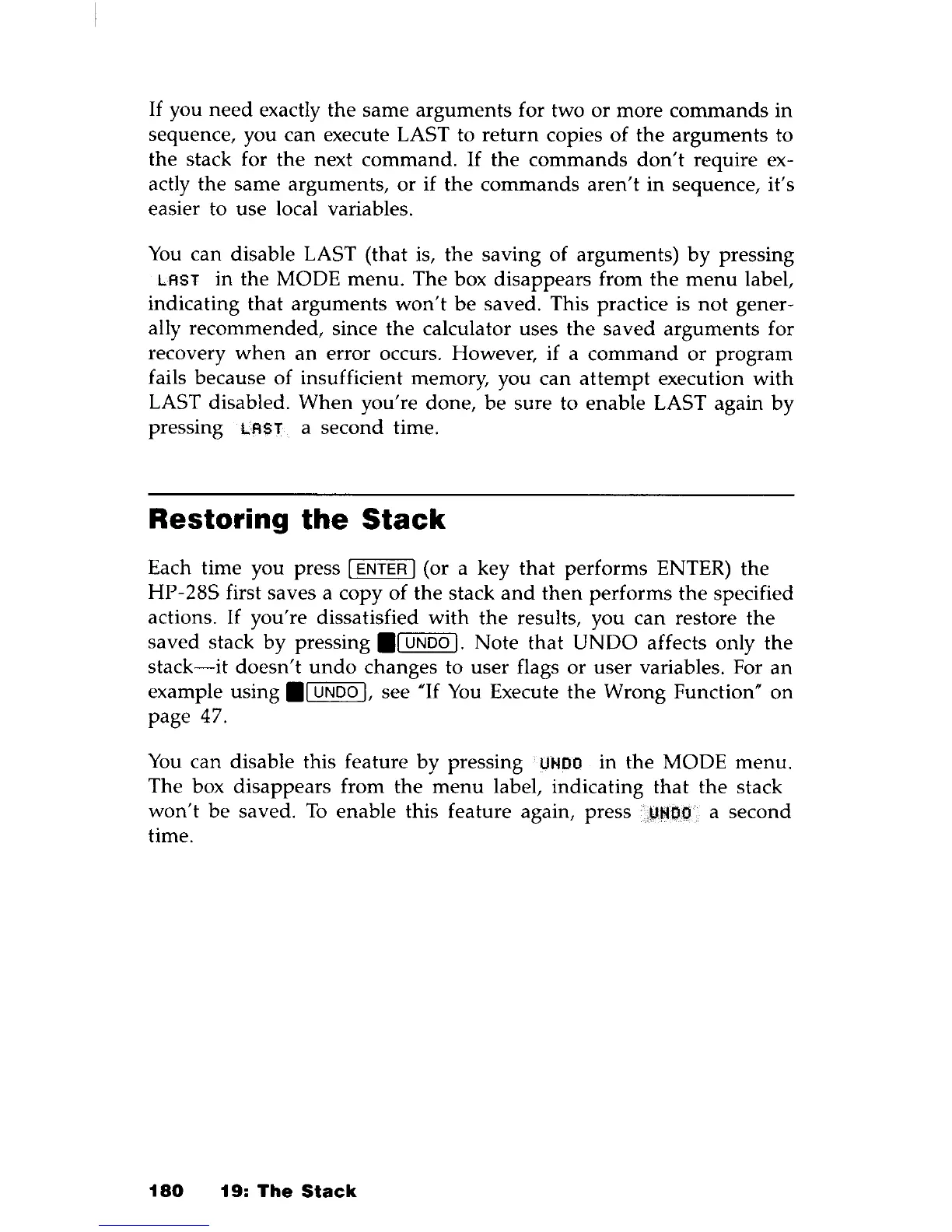If
you
need
exactly the same arguments for two or more
commands
in
sequence, you can execute LAST to
return
copies of
the
arguments to
the stack for the next command.
If the
commands
don't
require ex-
actly the same arguments,
or
if
the
commands
aren't
in sequence, it's
easier to use local variables.
You
can disable LAST (that is, the saving of arguments)
by
pressing
LAST in the MODE menu. The box disappears from
the
menu
label,
indicating
that
arguments
won't
be
saved. This practice is
not
gener-
ally recommended, since
the
calculator uses
the
saved arguments for
recovery
when
an
error occurs. However,
if
a
command
or
program
fails because of insufficient memory, you can
attempt
execution
with
LAST disabled.
When
you're done, be sure to enable LAST again
by
pressing
LAST
a second time.
Restoring
the
Stack
Each time you press 1 ENTER I (or a key
that
performs ENTER) the
HP-28S first saves a copy of the stack
and
then
performs
the
specified
actions.
If you're dissatisfied with
the
results, you can restore
the
saved stack
by
pressing
.1
UNDO
I.
Note that
UNDO
affects only
the
stack-it
doesn't
undo
changes to user flags or user variables. For
an
example using
.1
UNDO
I,
see
HIf
You
Execute
the
Wrong Function"
on
page 47.
You
can disable this feature
by
pressing
UNDO
in the MODE menu.
The box disappears from
the
menu
label, indicating
that
the
stack
won't
be saved.
To
enable this feature again, press .
UNDO
a second
time.
180
19:
The
Stack

